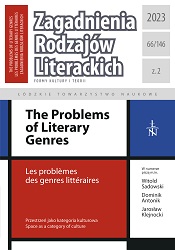Przestrzeń dyskomfortu w filmach Rubena Östlunda
The Space of Discomfort in Ruben Östlund’s Films
Author(s): Tomasz AdamskiSubject(s): Geography, Regional studies, Sociology of Culture, Film / Cinema / Cinematography, Sociology of Art
Published by: Łódzkie Towarzystwo Naukowe
Keywords: Ruben Östlund; film; space; the Cinema of Discomfort; heterotopia;
Summary/Abstract: The author analyzes a selection of Ruben Östlund’s feature-length films in terms of the presence of discomfort space in them. In doing so, he refers, first to the notion of “discomfort cinema” proposed by Geoff King, but also sets the analyzed works in the context of the concept relating to feel-bad films, as presented by Nikolai Lübecker, and to strategic disorientation, a technique of postmodern cinema, as described by Andrzej Zalewski. The author of the article notes that discomfort in Östlund’s films occurs on at least three levels: the level of the diegetic characters, the viewer watching the film, and is present in the cinematic means used by the director, such as wide sets, long takes, static camera and frequent use of off-screen space. The basis for such oriented research will be the concept of spatial turn, humanistic geography, and the starting point will be geographical place functioning in various contexts (social, cultural, historical). The article also proposes a division of space in the Swedish director's films into the space of nature, public space, and heterotopia (Foucault), in the context of which there are also references to the concept of non-places (Augé). As for the analyses of the film itself, they are based largely on textual analysis derived from general structural analysis, which means that the author treats the film as a text, and this text is a “realized unit of discourse.” In conclusion, the author also points out that space in the Swedish director’s films can be read allegorically, as a critique of the modern welfare state, or consumer society.
Journal: Zagadnienia Rodzajów Literackich
- Issue Year: 66/2023
- Issue No: 2
- Page Range: 0-0
- Page Count: 14
- Language: Polish

